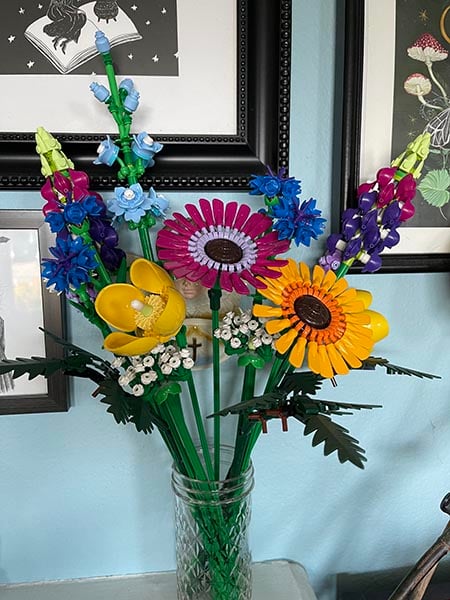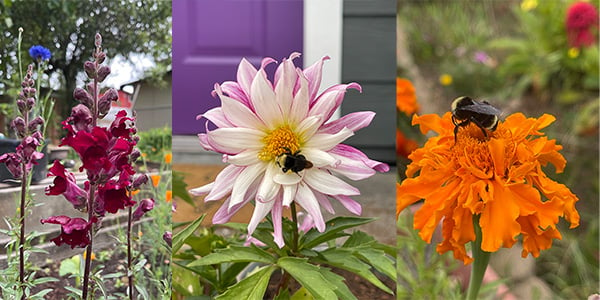
Two of the very best things that life has to offer are the companionship of our pets and the wide variety of flowers and plants we can turn to when color and aroma therapy are needed.
In fact, numerous studies highlight the positive impact that pets and flowers each have on physical and mental well-being.
That being said, pets and botanicals don’t always play well together — and that can cause stress at best, and heartache at its worst.
There are so many different flowers and plants out there it can be overwhelming to figure out which are toxic to dogs and cats, like lilies, foxgloves, poinsettias, sago palm…the list is pretty endless.
Instead of trying to research all of the plants you have to stay away from, sometimes it’s easier to have a list of beautiful pet-safe flowers to guide you into what you actually can let your dog or cat get near, both inside or outside of your home.
In fact, I decided to write this article because a friend of mine recently brought home an amazingly cute puppy named Victor and has been posting pictures of him in their yard. She also posted a photo of a bleeding heart flower, which is gorgeous but highly toxic.
Being a flower enthusiast who works at Preventive Vet, I said, “Keep Victor far away from that!” She asked for recommendations of what she can plant instead, and here we are.
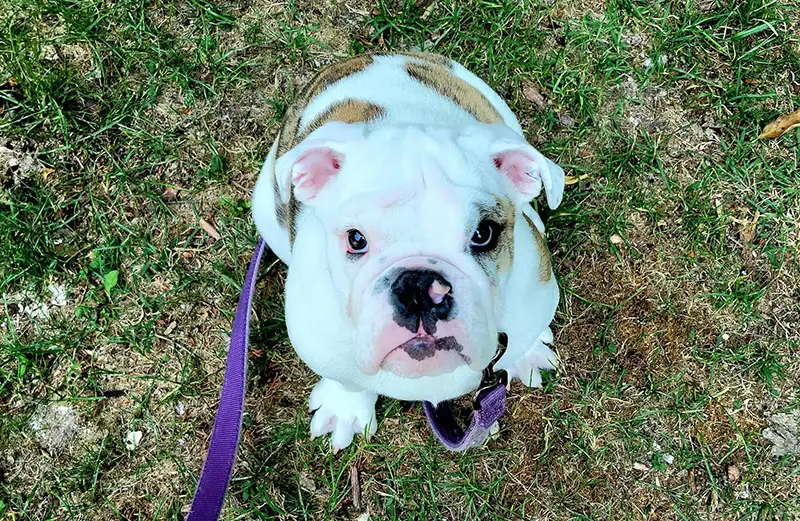
Without further ado, here are over 20 exquisite, pet-safe, flowers and plants from my garden in Seattle (hardiness zone 9a). When I started growing these, a few years ago, I was a complete novice. So if I can do it, anyone can — especially if you're up for experimenting.
These are all easy to care for and as an added bonus, many of these make great cut flowers to put in vases, are edible, or have other unique medicinal qualities.
I’ve noted whether they are perennials (come back every year) or annuals (you will either need to get new ones or rely on self-seeding, most of which have done so happily in my garden).
You’ll also see from the photos that most of them are very much loved by our amazing pollinators — and since I know a lot of dogs and cats may see them as flying toys, it may be a good idea to bookmark our article on what to do if your pet gets stung (I've never had any issues).
It is important to note that while these plants are generally considered safe for dogs and cats, any of these may pose a risk if consumed in large amounts.
It's always best to try to keep your pets away from them — especially if you'd like to be able to enjoy them.
Skip ahead for tips on seed-starting
To make things easier for you to know what to look for, I've tried link to high-quality, non-GMO seeds. Some companies have seed collections, like this one (minus the chives), that include several of the flowers I've suggested below.
Some of these, like fuchsias and roses, you are likely better off buying at a nursery or finding a friend who will let you take cuttings from their plants to make new ones.
Bee Balm aka Bergamot (perennial)
Bee balm attracts wonderful pollinators like bees, butterflies, and hummingbirds. Because of the strong fragrance it emits, it has also been known to repel mosquitos. It's absolutely beautiful but needs a lot of sun, so make sure to not let it get shaded out by other plants (speaking from experience).
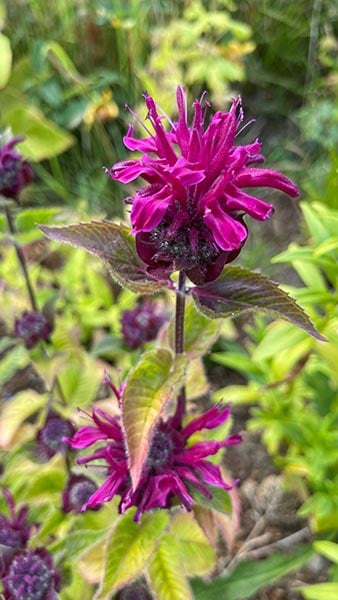
Calendula (annual that self-seeds very easily)
Calendula was the first type of flower I ever experimented with hand-sowing into a garden bed. It worked really well and thanks to its incredible ability to self-sow, I don't think I'll ever be without them.
Calendulas are beautiful, pollinators love them, and they are edible. Their oils are also used in topical treatments for minor cuts, burns, and rashes, and are commonly found in soaps, lotions, and other skin care products.
They don't have a strong aroma when you put your face in them, but when I deadhead with my hands (which is very easy to do with these) the smell is incredible.
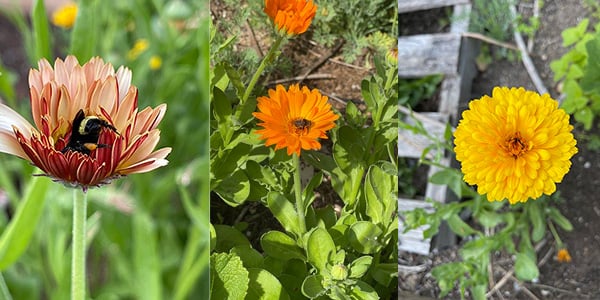
Celosia aka cockscomb (there are perennial and annual varieties)
Celosia was the hardest one for me to grow from seed but I absolutely love the look so I'm going to continue trying! Their buds are incredibly vibrant which make them great for display.
Pollinators love them and its leaves, tender stems, and young flower spikes can be eaten. If you're in an arid climate, these are also drought tolerant and relatively low-maintenance.
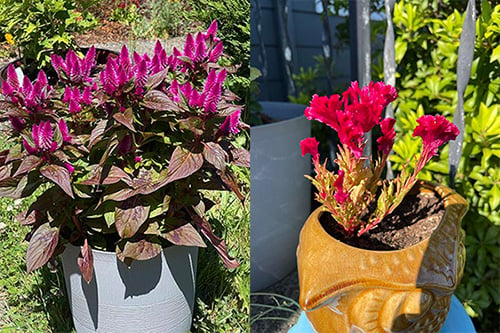
Coreopsis (there are perennial and annual varieties)
We have had both the annual and perennial varieties of coreopsis and the perennial is super low-maintenance and spreads very well. The flower structure is really cool, similar to daisies, and they have a long blooming season, which makes them great for cut flowers and to be used in wildlife gardens because they attract a lot of beneficial insects and feed butterflies and even hummingbirds.
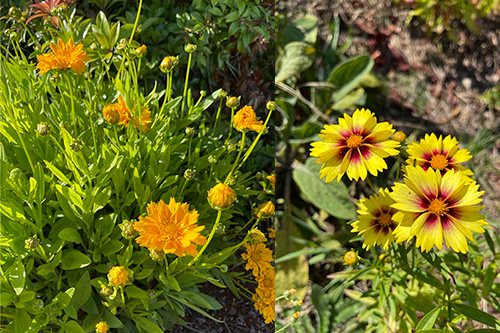
My bulldog, Maevis, has decided the coreopsis are her favorite. Every time we leave the house she stops and smells them.

Cornflower aka Bachelor's Buttons (annual but very good at self-seeding)
Cornflowers have quickly become one of my favorite flowers of all time. When my souldog Marshall passed away, I was given a pack of memorial seeds with his ashes. It was my first time trying to start any flower from seed and I was so afraid that nothing would grow.
One single cornflower plant survived my attempt and after transplanting it to the raised beds we created on our front lawn, it quickly turned into a field of stunning blue blooms. They are some of the first flowers to open in the spring and continue throughout the summer.
They self-seed incredibly well and are also easy to transplant. They have long stems which make them easy to use as a cut or dried flower and also make beautiful pressed flowers. Bees and ladybugs love them — so they make excellent companion plants to keep aphids away.
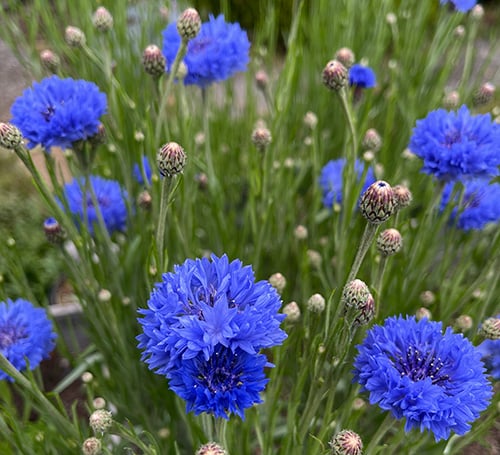
Dahlias (perennials)
Regardless of which color or shape of dahlia you are looking at, it is almost guaranteed it will be one of the most beautiful things you have seen that day. The first year we planted dahlia tubers nothing happened.
We completely forgot about them and were treated with a gorgeous surprise two years later when they suddenly appeared.
This year we picked up a few more varieties at a garden show and they must have liked the conditions better because the foliage is just starting to pop up from the raised beds I placed them in.
Since dahlias aren't particularly hardy, many gardeners, like my favorite Brit Monty Don, dig out and store their tubers throughout the winter to ensure they make it safely through the cold months and can be replanted at the end of spring.
If you want to make someone happy by bringing them flowers, these are guaranteed winners, my friends.
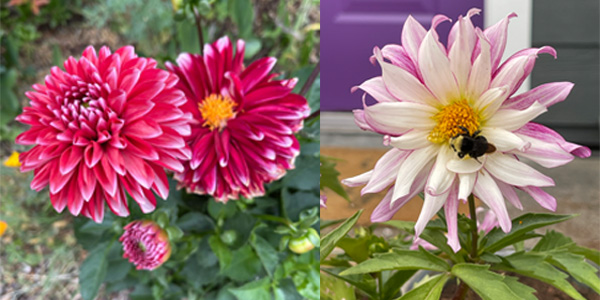
Note: There is a lot of conflicting information about plant toxicity, especially when it comes to its severity.
This makes it quite hard to determine how dangerous or not things are. Anything that causes any type of issue with a dog or cat, is listed as toxic, even if the risk isn't severe or fatal.
Dahlias are often put on the toxic list but, especially compared to other plants, are not high in toxicity. They can cause mild gastrointestinal signs and skin issues.
As mentioned above, even with plants deemed safe, you need to always supervise your pet and prevent them from chewing on, eating, or playing with them, because anything can become a problem.
Echinacea (perennial, however not in our garden)
There's a lot to like about echinacea. On top of being pet-safe, it also has a lot of medicinal uses that you may already be aware of, especially around cold and flu season. But what I enjoy the most is its uniquely textured seed heads.
I can't walk past them without running my fingers over them. I haven't had the best luck with having more than a few come back year after year, or growing them from seed, but I will continue trying!
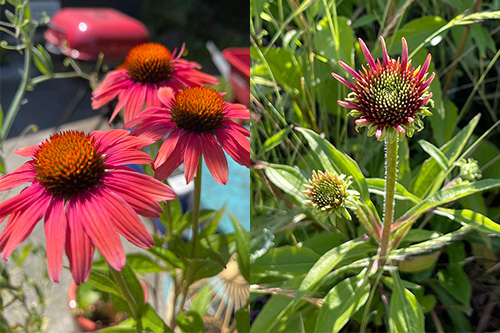
Forget-me-nots (self-seeding perennial)
It probably won't surprise you to read that these early-blooming cuties symbolize remembrance, true love, and long-lasting relationships. Forget-me-nots remind me of my sweet Marshall, and we are very lucky to have them growing wildly in our yard. I like to think they're a gift from him.
They enjoy sunshine but thrive with at least some hours of shade throughout the day and don't seem to require much maintenance. They can also be used as great ground cover to replace grass (and weeds). They have short blooming seasons so enjoy them while you can!
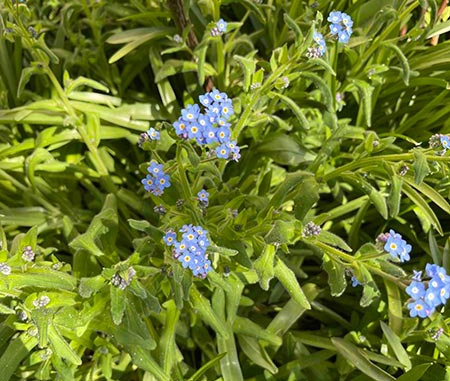
Fuchsias (perennial)
If you're looking to attract hummingbirds (and who doesn't want to do that — especially since they can provide lots of fun environmental enrichment for you and your cat), fuschias are the beautiful pet-safe flower for you!
We have huge bushes of them that were planted before moving into our home and we enjoyed them so much that we bought several other varieties to put in pots and hanging baskets.
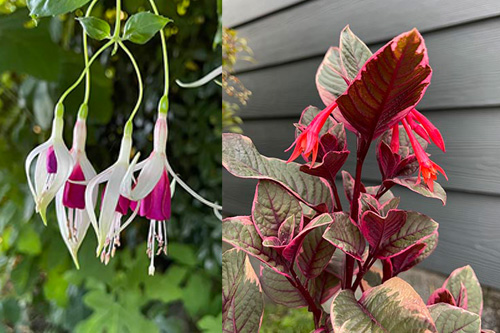
Gerbera Daisies (tender perennials similar to dahlias)
This is the first year I've brought these beauties into our garden so I'm not sure how well they'll hold up to our winters. They have brought a lot of bright and cheerful color to our raised bed and the blooms have wonderful staying power, which make them great for cutting and putting on display.
They carry a lot of rich nectar which make them favorites amongst the pollinators. Bonus: Gerbera daisies can be used as natural air purifiers and help remove toxins indoors.
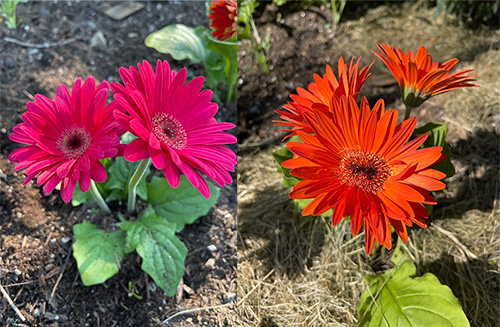
Impatiens (annuals with some perennial varieties)
Another hand-sowing success story! Impatiens come in lots of different color varieties and can thrive in shady areas, which makes them really nice if you don't have a lot of sun or want to plant something that may get shaded out by other plants.
They are easy to take care of and their foliage adds some extra visual pizzaz.
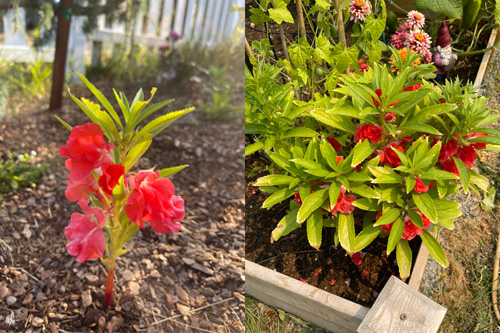
Lavender (perennial)
Lavender is known for its showy purple flowers that, along with being pet-safe, have other wonderful properties. Its scent has been known to have calming effects and it is also used as a natural repellant for mosquitos, flies, and moths.
You can put lavender in soaps and add a floral touch to your cooking and baking (although I've heard a little goes a long way).
It can be used as a companion plant but doesn't always play well with others; so make sure to do your research before putting it with anything willy nilly.
Caution: Eating large quantities can result in poisoning, resulting in vomiting, fever, and constipation. Please do not let your pets consume any part of the plant.
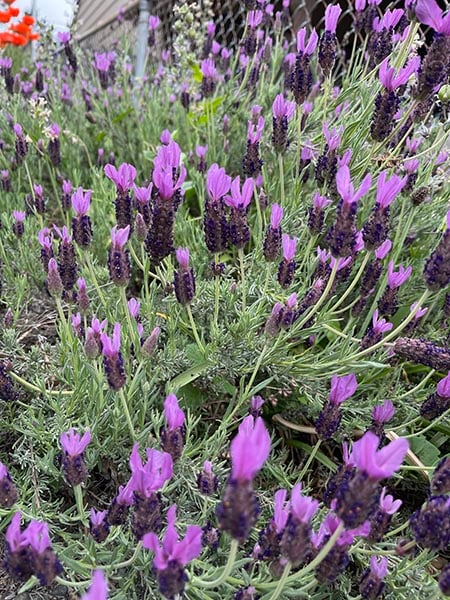
Marigolds (annuals)
Marigolds are real garden V.I.P.s and probably my favorite companion plant to put with just about anything. I grow them from seed and hand-sow, but I also get some pre-bloomed ones from the grocery store every year, just so I know I'll have some ready when the first signs of tomatoes appear.
Marigolds come in a variety of colors and sizes. Some of my favorites are the gigantic orange ones I grew from seed a couple of years ago. The bees loved them too!
They have a strong, but enjoyable, scent that helps to repel pests from destroying your veggies. While they are annuals, it's really easy to collect their seeds for next year's fresh batch.
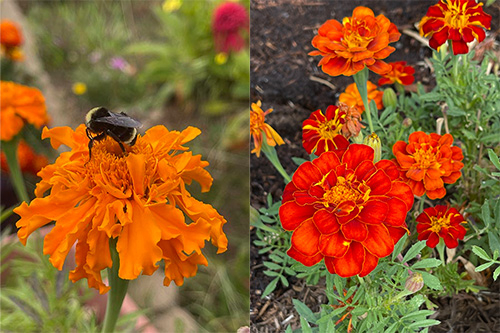
Nasturtium (annuals)
The only nasturtiums I've been able to grow to maturity so far are the ones I hand-sowed in a garden bed that hasn't seen fresh soil in probably 15-20 years. Not only are they beautiful to look at, but the flowers and leaves are edible! The leaves can be used in salads or as a substitute for basil when making pesto.
They make great companion plants because they attract aphids and whiteflies away from your more prized plants (which makes them a bit less appealing to eat).
So if you're wanting to add these beauties to your plate, I would suggest giving them their own companion plant. I've had really great success avoiding aphids by having them planted amongst calendulas. Another garden V.I.P. that does well in a bed or climbing a trellis.
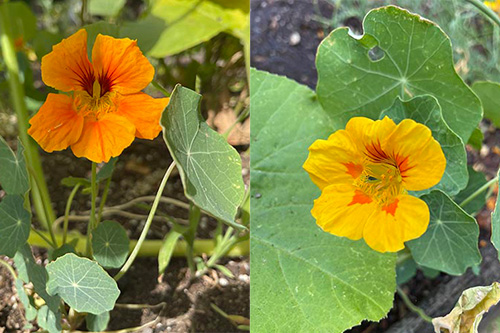
Pansies (depends on where you live but ours are thankfully perennials, unless I am wrong and they are actually self-seeding annuals)
Pansies are another one of my absolute favorite flowers. They come in an incredible amount of color varieties, including black — which my inner goth child is particularly drawn to, and usually have a contrasting burst of color in their centers.
I've got them growing everywhere — some are much taller than others, some have much larger blooms than others, but what they all have in common is the smile they put on my face.
Pansies are edible; some varieties can do well in cold and warm temperatures, so they've got a long growing season and tend to be some of the first blooms to pop here in Seattle. They do great in pots, in borders, or in raised beds, and need very little maintenance.
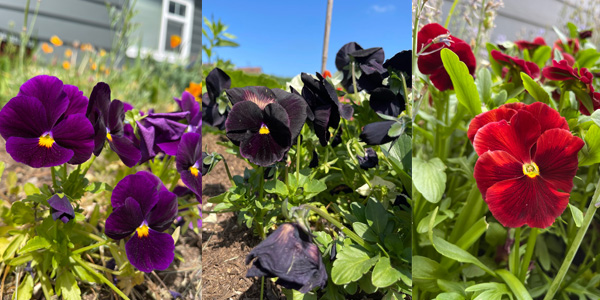
Petunias (annual and perennial varieties)
Another fun beautiful flower that comes in cool eye-popping color varieties, shapes and patterns. Petunias have a long flowering season, do well in a variety of growing conditions, and can even be used as ground cover.
Bees and butterflies love them and it's easy to create new plants from taking cuttings or dividing an established plant.
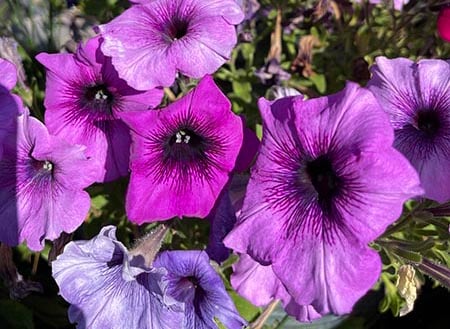
Roses (perennials)
Like Bret Michaels sings, "Every rose has its thorn," so while most varieties of roses are non-toxic to pets, you'll want to keep them away from getting their mouths and paws on the prickly stems to prevent injuries.
We have a few different rose varieties that have been growing here with little, to no, upkeep since way before we took up residence. In fact, I've forgotten we had some of them until suddenly their beautiful and fragrant blooms appear from our overgrown bushes.
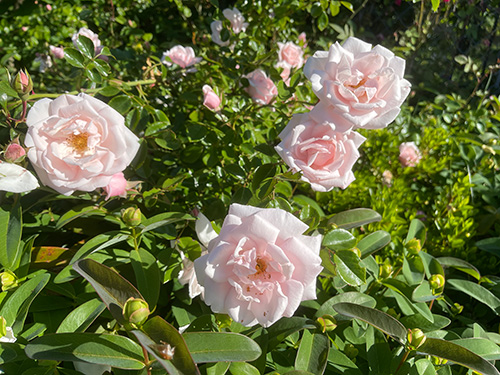
Snapdragons (perennial and annual varieties)
Snapdragons come in a wide variety of sizes and colors and make a great addition to any garden or bouquet of cut flowers. While their shapes aren't exactly the same, I feel like snapdragons are a great pet-friendly option to use instead of foxgloves, which are toxic to cats and dogs.
One really cool thing about snapdragons is that you can (gently) squeeze on their flower heads to make it look like a dragon's face opening and closing its mouth, which is how they got their name!
I've found snapdragons to also be really easy to plant from seed, but they still usually find their way into my shopping cart when I'm in the garden section of the grocery store.
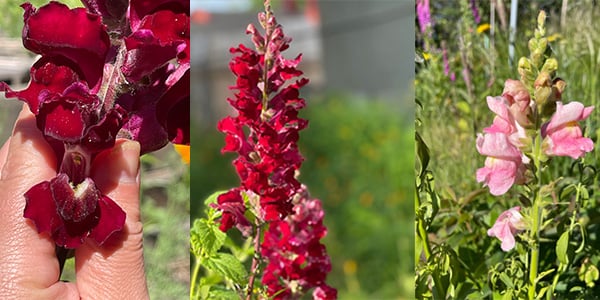
Sunflowers (annuals)
This is my first year growing sunflowers from seed and I'm starting with a dwarf chocolate variety because the tall ones creep my wife out for some reason — maybe because their faces track and follow the sun as it moves throughout the day.
One of the coolest, and most delicious, things about sunflowers are obviously their seeds, which make great snacks for humans and birds alike. Some sunflower varieties are environmental helpers that are able to remove toxins and heavy metals from soil!
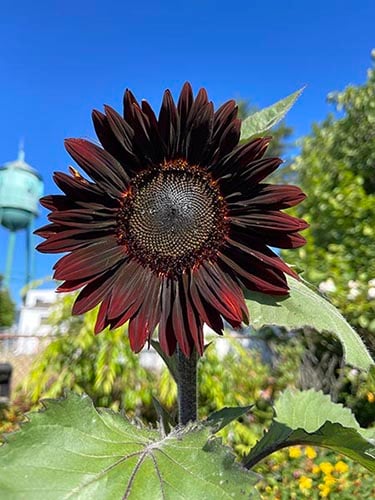
Violas (perennials that are also self-seeding)
While they come from the same family, look very much like pansies, and are edible like pansies, violas are a totally different flower. You can tell them apart because violas are usually much smaller and have a slightly different petal shape.
They do well in cooler temperatures and usually come back even earlier than pansies every year. Another cheerful pet-safe flower that plays well with others in containers, and require very little maintenance to be happy.
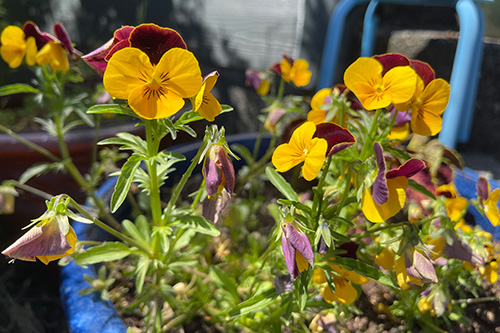
Yarrow (perennial)
Yarrow is an eye-catching flower from the second it begins to grow and continues to please long after its blooms have lost their color. We have a few different kinds that range in color and size. The large yellow ones are a big hit among the bees and butterflies in our yard. Their long stems make them great for cutting and displaying indoors.
Their heads are very thick, so don't make great pressed flowers (we tried), but are excellent dried. They are great companion plants with tomatoes and peppers and have a long history of being used in traditional medicine and herbal teas. They look cool from far away but get even cooler up close.
Caution: Yarrow contains tannins that are toxic for dogs and cats, but yarrow poisonings happen rarely due to their bitter taste, which dogs tend to avoid.
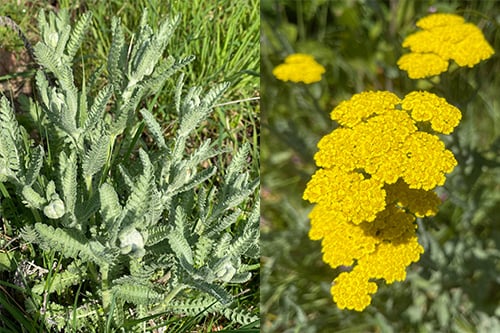
Zinnias (annuals)
Zinnias come in different shapes and colors and my favorite variety are the ones that most resemble dahlias. I'm trying my hand at hand-sowing this year, but have had good luck starting from seed and then transplanting to a garden bed in the past.
They are bright and cheery, easy to take care of, loved by pollinators, and make great cut flowers to bring inside.
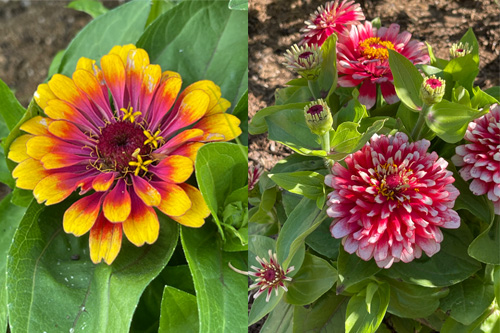
If you don’t have space to garden or you’ve tried everything to keep your dog or cat away from your plants and haven’t had luck, you can still enjoy their beauty without having to leave your home.
If you have a Netflix account — spend some quality relaxation time with Louis Shwartzberg’s magnificent Moving Art series and start with Season 1’s Flowers. Or, you can keep a beautiful pet-safe bouquet on display year-round with one of the incredibly fun LEGO flower sets like the one we have below.
Use Caution: Some dogs enjoy putting things in their mouth that they shouldn't, like LEGOS, so it's best to keep them in a spot they can't reach, as they can become a choking or obstruction hazard.
Seed-Starting Tips
If you couldn't tell by now, I am someone who loves to experiment and highly recommend it. YouTube has been a wonderful, and sometimes overwhelming, teacher when it comes to anything gardening-related. If you get stuck or have a question and need visual cues, that's the first place I would head to.
My main tip for you: Read the instructions on the seed packet. This will usually tell you how many seeds to plant together, the depth of planting, how much sunlight it needs once it is ready to grow to maturity, the temperature range it grows best in, and how hardy the plant is.
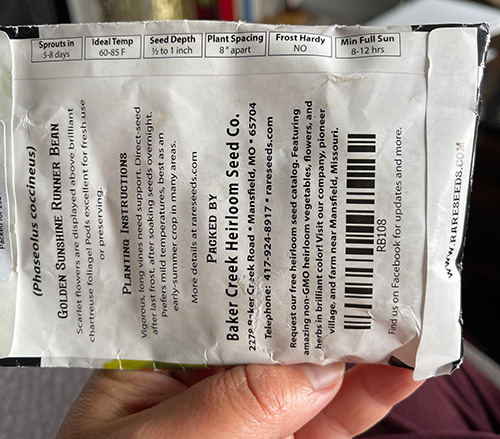
Why You Should Use Peat-Free Soil if Possible
Peat-free takes some getting used to but it's an important step to take for the future of our ecosystem and helping combat climate change. The world's peatlands are not a renewable resource and when harvested, it not only destroys precious wildlife habitats, but releases a ton of carbon dioxide into the atmosphere.
It used to be very difficult to find bags of peat-free soil, but thankfully, they just started selling some at my local hardware store and last year I was able to find some at Target!
One of the benefits I've found of using the peat-free mixes for potting and bed soil, is needing to use less water because it retains the moisture so well.
This year, I've started most of my flowers and veggies in compressed coconut coir plugs, which are very easy to use:
- Place all of your pods in a grow kit tray — I like the one I linked to because you aren't forced to buy starter pods that have peat in it, you don't have to worry about the pods you're using being the right size to fit in any holes, and it allows you to put other types of containers alongside your pods
- Add water and wait for them to reach full size, probably about 2-21/2 inches high
- Use something like a toothpick or kabob skewer to make a little hole for your seeds
- Put the seed(s) in as deep as the seed packet suggests
- Cover with the soil that was moved to make the hole
- Spray with some water
- LABEL — this is important. I like to use stickers, which I write on and put on the outside of the tray.
- Cover with the kit's dome
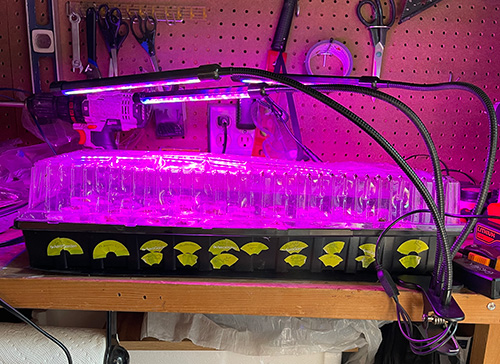
Most seedlings need warmth and about 12-16 hours of light per day to grow strong and healthy, so depending on the time of year and how much light and heat you get on a windowsill, you may need to use a heat mat underneath the germination tray (make sure to get the right size for your space), as well as some grow lights.
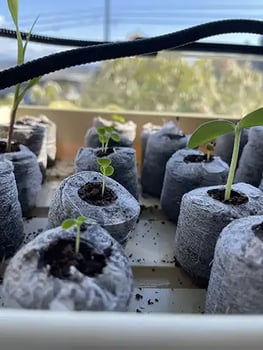 If you do end up using artificial lights, make sure to keep them at least 2-4 inches above your plants and adjust their height as they grow. I have a few kinds of everything because I've started to take over any countertop available in our house and the workshop in our backyard (seen in the photo above).
If you do end up using artificial lights, make sure to keep them at least 2-4 inches above your plants and adjust their height as they grow. I have a few kinds of everything because I've started to take over any countertop available in our house and the workshop in our backyard (seen in the photo above).
You'll want to give them a light misting with water every day to make sure they are moist enough to germinate but be careful not to overwater.
Once the seeds have germinated and sturdy seedlings have taken their place, you'll want to remove the dome completely so the humidity doesn't destroy them.
When I notice things are looking and feeling a little dry, I pour about a ¼-inch of water in the bottom of the tray and watch as the seedlings soak it up. Just make sure your seedlings aren't sitting in water, as that can encourage gnats and fungus.
I like to water my seedlings from the bottom because it encourages the roots to go in search of the water, which leads to stronger and deeper root development. I'm also less likely to accidentally waterlog or damage the seedlings by pouring too quickly from the top.
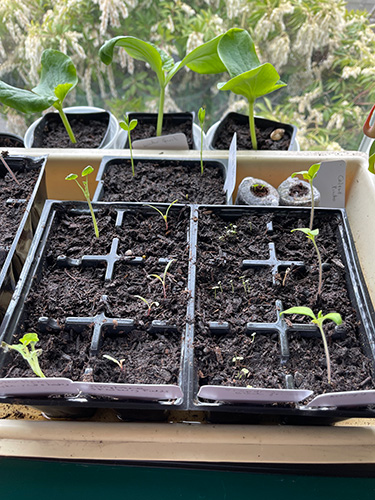
When you start seeing the roots coming out from beneath the growing pod or container, it will likely be time to move your seedlings to larger containers before you're able to transplant them to their final growing space outdoors.
I like to reuse plant containers from anything store-bought that I've purchased in the past since they already have drainage holes (but you can also add a few holes to the bottom of taller clean plastic to-go containers!) and then place them back in the seedling tray or put them into shorter, longer, clean plastic to-go containers.
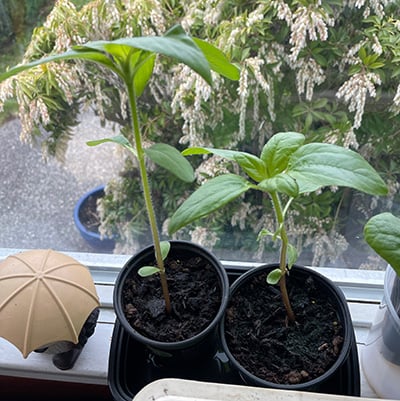
Before you can transplant anything outside, make sure to harden your plants off. I've lost a lot of good seedlings from being too impatient and getting them outside too early. Hardening them off will give them the best chance of survival.
You can start this process indoors, by using a little fan (oscillating preferred) to blow on your seedlings, almost as if they were being blown by the wind.
Then you'll introduce them to being outside in short increments. You don't want to expose them to too much direct sunlight, rain, or wind right away. Start with a few hours per day in a shadier area. Gradually increase that time over about a week or two, and when the forecast is right, it's time to get those babies in the ground or in planters.
Do you have a green thumb and some tips to share with us?
We'd love to hear from you in the comments!


